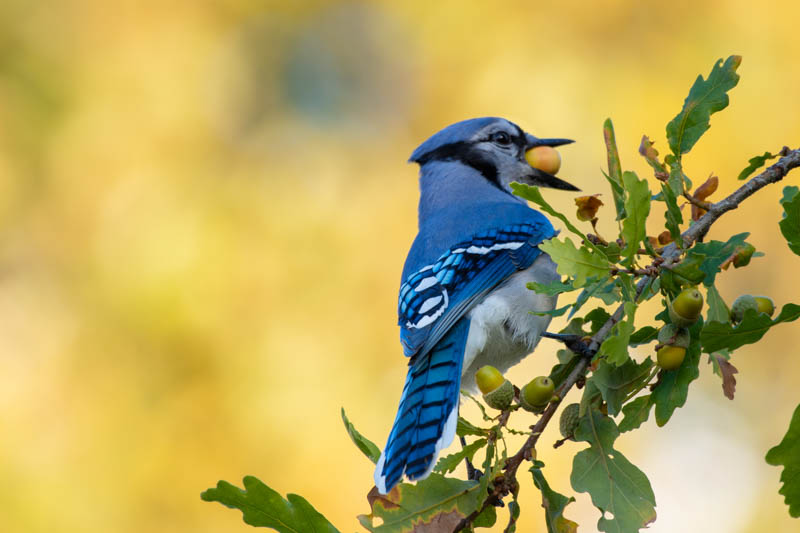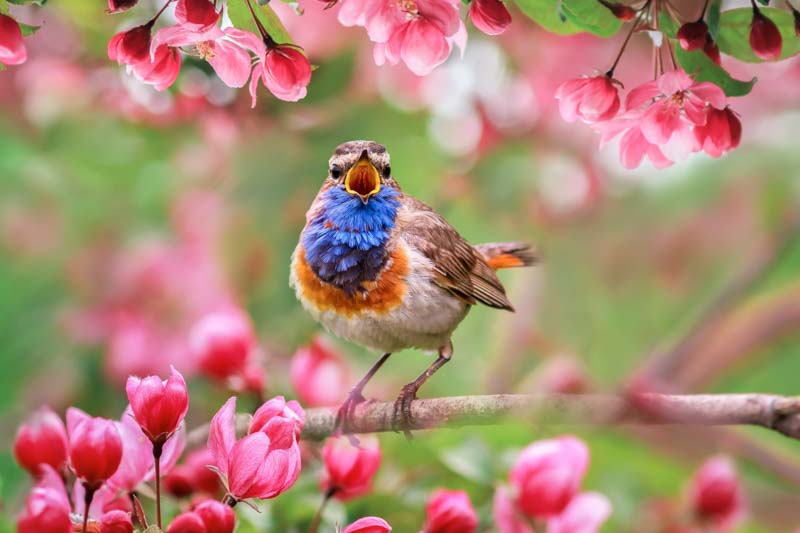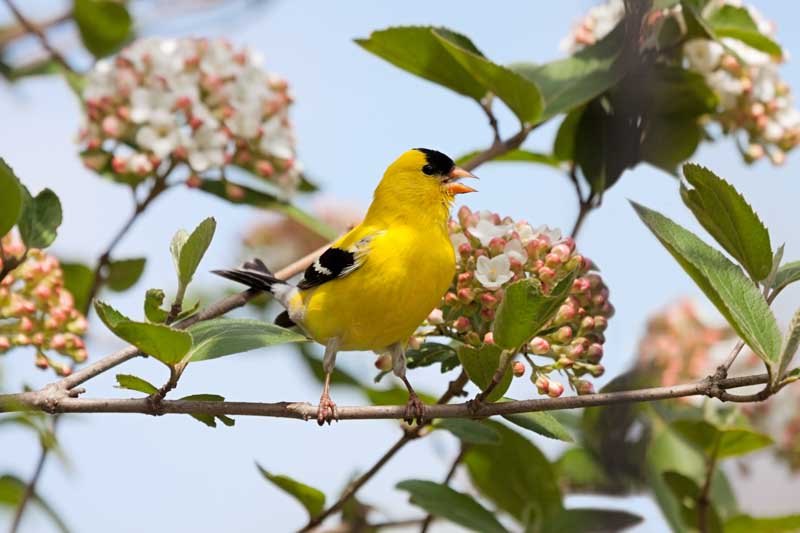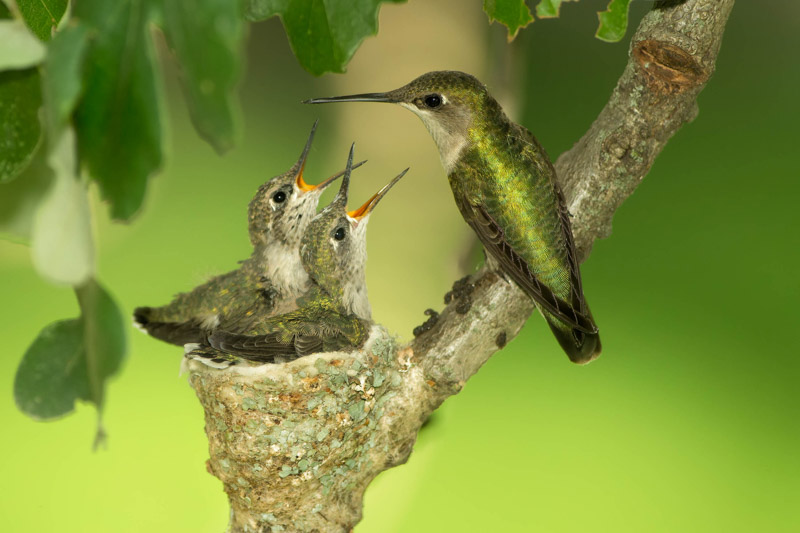Incorporating trees into your garden not only enhances its beauty and provides shade but also significantly contributes to local wildlife support and biodiversity.
Trees play a pivotal role in supporting wildlife, offering shelter, food, and nesting sites. Planting a variety of trees in your garden can transform it into a haven for birds, insects, mammals, and other creatures, contributing to biodiversity and ecosystem health. Here’s a closer look at how they benefit wildlife and some species to consider for your garden.
Trees provide essential shelter and protection for wildlife. Their branches and foliage offer refuge from predators and harsh weather conditions. Hollows in older plants are vital nesting and roosting sites for birds, bats, and insects.
Trees are a crucial food source for wildlife. They produce a variety of foods, including fruits, nuts, leaves, buds, and flowers, which feed countless animal species. Even their decay contributes to the ecosystem by fostering fungi and insects that, in turn, feed other wildlife.

A vibrant blue jay feasting on a large oak acorn
Many tree species offer safe nesting sites for birds and squirrels, among others. The structure of branches and the cover provided by leaves are ideal for building nests.
Beyond direct benefits to wildlife, trees offer ecosystem services that indirectly support wildlife populations. They improve air and water quality, sequester carbon, and regulate temperature, creating a more hospitable environment for all living beings.

A male bluethroat serenades from a blossoming pink apple tree branch
Oak (Quercus spp.): Oaks support a wide range of wildlife. Their acorns are a vital food source for birds like jays, woodpeckers, and mammals, including deer and squirrels. Oaks also host numerous caterpillar species, providing food for birds. Discover 8 compelling reasons why you should plant an oak.
Willow (Salix spp.): Willows are essential for caterpillars, and their early blossoms provide nectar for bees and butterflies. The dense foliage offers nesting sites for birds.
Pine (Pinus spp.): Pine seeds feed birds and small mammals, while their evergreen foliage offers year-round shelter. Pine forests are rich in biodiversity.
Fruit Trees (Various Genera): Apple, cherry, and plum trees not only beautify the garden but also offer fruits for birds, mammals, and insects. Their blossoms are important for pollinators.
Birch (Betula spp.): The catkins of birch trees provide seeds for birds, and their bark hosts insects for woodpeckers. Birches support a variety of butterfly and moth larvae.
Maple (Acer spp.): Maples offer seeds for squirrels and birds, and their dense canopy provides shelter and nesting sites. They also support various butterfly species.
Hawthorn (Crataegus spp.): With their flowers, fruits, and dense branching, hawthorns are excellent for birds and insects. They provide nectar, berries, and protective nesting sites.
Rowan or Mountain Ash (Sorbus spp.): The berries of rowan trees are a favorite for many birds during autumn and winter. They also offer blossoms for pollinators in spring.
Holly (Ilex spp.): Holly trees provide winter berries for birds, evergreen shelter, and are particularly valuable in winter when food is scarce.

A charming goldfinch perches gracefully upon a vibrant blossoming viburnum bush
Diversity is Key: Plant a variety of tree species to support a wide range of wildlife. Diverse plantings mimic natural ecosystems and provide year-round resources.
Consider Native Trees: Native plants are adapted to your local climate and soil, and they typically offer the most benefits to local wildlife.
Layered Planting: Incorporate trees of different sizes, along with shrubs and groundcovers, to create a layered effect. This mimics natural habitats, and offers varied resources for wildlife.
Leave Some Wild: Allow parts of your garden to grow more naturally. Fallen leaves, dead wood, and even the occasional fallen tree create microhabitats for insects, fungi, and small animals.
Water Sources: Provide water sources such as bird baths or ponds. These attract birds, insects, and other wildlife, enhancing the biodiversity of your garden.

A female hummingbird tends to her two precious chicks in their nest
When selecting and purchasing a tree to attract wildlife to your garden, consider the following guidelines to ensure you make the best choice for your space and local ecosystem:
Research Native Species: Native plants are generally more beneficial for local wildlife, providing the right type of food, shelter, and nesting sites. Look for species that are indigenous to your area.
Consider the Wildlife You Want to Attract: Different trees attract different types of wildlife. For example, berry-producing species like holly or rowan are great for birds, while flowering crab apples can attract bees and butterflies.
Size and Growth Habits: Assess the available space in your garden. Consider both the mature height and spread of the tree to ensure it can grow without becoming overcrowded. Also, think about whether you prefer a plant that offers dense shade or one that grows more openly.
Seasonal Interest: Choose trees that offer multiple seasons of interest to wildlife, such as spring blossoms, summer shade, autumn fruits, and winter shelter.
Check Hardiness Zone: Make sure the species you are considering suits your climate. The USDA Hardiness Zone Map for your area can guide you in selecting the right plant.
Buy from Reputable Sources: Purchase from reputable nurseries or garden centers. Healthy, disease-free specimens are more likely to establish quickly and attract wildlife sooner.
Inspect the Plant Before Buying: Look for plants with strong, healthy growth, without signs of pests or diseases. Check the root system if possible; avoid plants that are pot-bound or have circling roots.
Ask for Advice: If you’re unsure, nursery staff can offer valuable insights into the best plants for attracting wildlife in your local area.
Create a membership account to save your garden designs and to view them on any device.
Becoming a contributing member of Gardenia is easy and can be done in just a few minutes. If you provide us with your name, email address and the payment of a modest $25 annual membership fee, you will become a full member, enabling you to design and save up to 25 of your garden design ideas.
Join now and start creating your dream garden!
Create a membership account to save your garden designs and to view them on any device.
Becoming a contributing member of Gardenia is easy and can be done in just a few minutes. If you provide us with your name, email address and the payment of a modest $25 annual membership fee, you will become a full member, enabling you to design and save up to 25 of your garden design ideas.
Join now and start creating your dream garden!